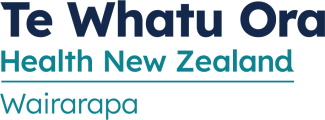Position Statement
Community Water Fluoridation
The Wairarapa District Health Board endorses community water fluoridation as an effective public health measure contributing to the maintenance of oral health, prevention of tooth decay and reduction in health inequalities. Community water fluoridation is a low cost measure that benefits people of all ages with natural teeth and has proven over the last 65 years to be very safe. Local drinking-water supplies that are already fluoridated should remain so. Where technically feasible, where local supplies are not fluoridated, local authorities are encouraged to implement water fluoridation programmes as soon as possible to improve the oral health of their communities.
Background
The effectiveness of community water fluoridation (CWF) has been well documented in the scientific literature over the past 65 years. Before the first community fluoridation programme began in the late 1940s, data from the 1930s and 1940s revealed 50 to 60 percent lower tooth decay rates in children consuming naturally occurring fluoridated water compared with children consuming fluoride-deficient water.
Over the last 65 years, numerous studies have been published making CWF one of the most widely studied public health measures in history. Recent studies prove water fluoridation continues to be effective in reducing tooth decay by at least 25 percent in adults and children, even in an era with widespread availability of fluoride from other sources, such as fluoridated toothpastes. Studies continue to prove that the low levels of fluoride used in water fluoridation are safe.
Caries prevalence and severity was compared in a cross-sectional study of communities with and without CWF in New Zealand (Wellington and Canterbury) using 1996 school dental records data (Lee and Dennison 2004). The results showed children living in fluoridated communities had significantly better oral health compared with those living in non-fluoridated communities. The differences between the two groups were greater for Maori and Pacific children of low socioeconomic status (1).
The US Centers for Disease Control and Prevention (CDC) state that “Community water fluoridation is a safe, effective and inexpensive way to prevent dental caries”. The CDC holds community water fluoridation as one of ten great public health achievements of the 20th century alongside such achievements as vaccinations and control of infectious diseases.
The Wairarapa District Health Board notes professional, scientific and government entities in New Zealand and around the world, including the World Health Organisation and the Ministry of Health, endorse CWF. The Ministry of Health recommends the adjustment of fluoride to between 0.7 and 1.0 parts per million in drinking water as the most effective and efficient way of preventing dental caries in communities receiving a reticulated water supply, and strongly recommends the continuation and extension of community water fluoridation programmes where technically feasible (2).
New Zealand as a country adopted CWF relatively early on to help address widespread poor dental health. Before CWF in New Zealand it was commonplace for young adults to have their teeth removed and be fitted with dentures. Following trials in Hastings in the 1950s, CWF was introduced in many drinking-water supplies in the 1950s and 1960s.
Capital and Coast DHB and Hutt Valley DHB have some of the highest proportions of their populations covered by CWF with 96% and 94% respectively. There are only two urban areas not covered by CWF; Paekakariki and Petone; it is likely that CWF is technically feasible for both communities.
For Wairarapa DHB, the coverage is only 45% with Masterton City being fluoridated. There are four urban areas where CWF is likely to be technically feasible; Carterton, Greytown, Featherston and Martinborough. Initiating CWF programmes for these communities would bring the coverage up to near 70%.
The Wairarapa District Health Board is aware that there is a small but active local group of people opposed to CWF who, with assistance from others nationally and internationally, continue to lobby local councils to remove CWF. It is important that local authorities continue to receive evidence-based advice from health professionals at their local DHB, who are committed to improving oral health and the overall health status of their communities.
1 Lee and P. J. Dennison. "Water fluoridation and dental caries in 5-and 12-year-old children from
Canterbury and Wellington." New Zealand Dental Journal 100.1 (2004): 10-15.
2 In The Drinking Water Standards for New Zealand 2005 the Ministry of Health recommends the adjustment of water fluoride to between 0.7mg/L and 1.0mg/L for oral health reasons. These standards also set a Maximum Acceptable Value (MAV) for fluoride of 1.5mg/L. At this level or below it is considered to be safe to consume drinking water over a lifetime.

